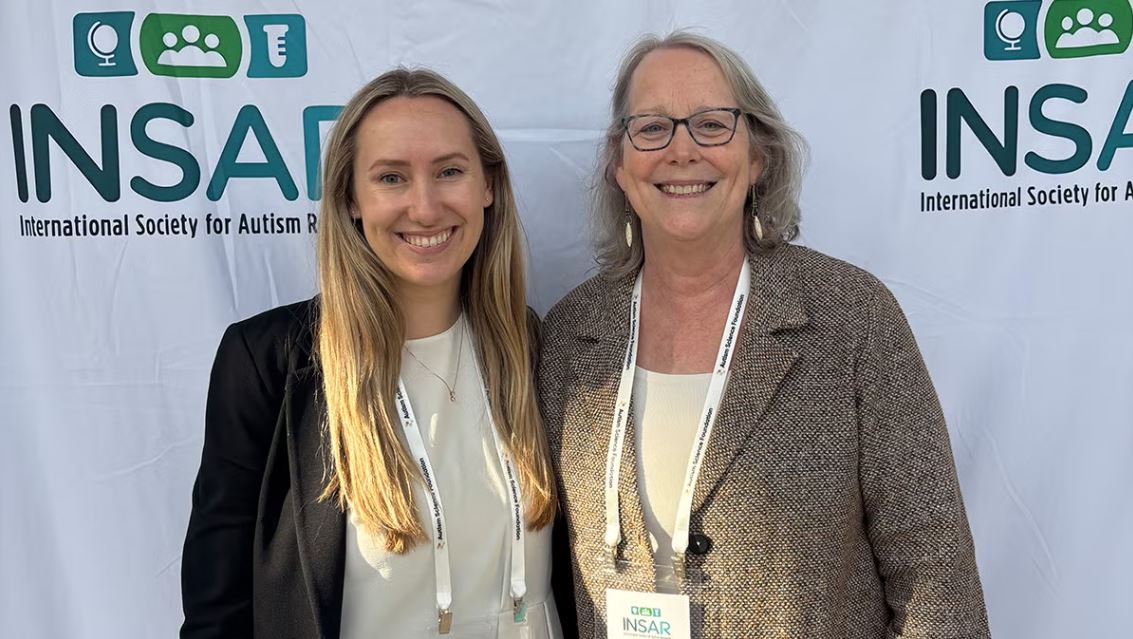Speech Apraxia and Autism Insights Revealed

Understanding Speech Apraxia and Autism
To comprehend the relationship between speech apraxia and autism, it is essential to grasp the individual concepts of speech apraxia and autism spectrum disorder.
What is Speech Apraxia?
Speech apraxia, also known as verbal apraxia or childhood apraxia of speech, is a motor speech disorder that affects the ability to coordinate the movements needed for speech production. It is characterized by difficulties in planning and executing the precise movements of the tongue, lips, jaw, and other speech-related muscles. Individuals with speech apraxia may struggle with the coordination and sequencing of speech sounds, syllables, and words. This neurological condition can make it challenging to produce clear and intelligible speech, leading to frustration and difficulties in communication.

What is Autism Spectrum Disorder?
Autism Spectrum Disorder (ASD) is a developmental disorder characterized by impairments in various domains, including linguistic, social, and cognitive functioning. Individuals with ASD may exhibit a range of symptoms, including repetitive/stereotypic behaviors, sensory issues, and difficulty maintaining eye contact during conversations. Impairments in imitation ability are often observed in cases of ASD. Autism encompasses a broad spectrum, with individuals experiencing varying degrees of impairment in communication, social skills, and cognition. Repetitive behaviors and sensory sensitivities are also common features of autism.
While speech apraxia and autism are distinct conditions, they can co-occur in some individuals. Children with autism and speech apraxia may face challenges in developing spoken communication skills. Their ability to produce words and sounds clearly may be limited, leading to frustration and difficulties in social interactions. It is important to recognize the unique characteristics of each condition and tailor interventions accordingly to support individuals with both speech apraxia and autism.
The Link Between Speech Apraxia and Autism
Speech apraxia and autism spectrum disorder (ASD) are two distinct conditions, but they can often co-occur, affecting an individual's communication abilities. Understanding the link between speech apraxia and autism is essential for providing appropriate support and intervention.
Prevalence of Speech Apraxia in Autism
Research suggests that a significant number of children with autism may also present with speech apraxia. One study found that as much as 65% of children with autism have speech apraxia. Another source states that approximately 30-65% of individuals with autism also have apraxia of speech, a motor speech disorder that makes it difficult to coordinate the movements needed for speech.
While speech apraxia is not a core feature of autism, its presence in individuals with autism can significantly impact their communication abilities and social interactions. It is important to note that not all individuals with autism will have speech apraxia, and the severity of speech apraxia can vary from person to person.
Impact of Speech Apraxia on Communication
For individuals with autism and speech apraxia, the challenges in developing spoken communication skills can be notable. Difficulty coordinating the precise movements required for speech production can result in limited ability to produce words and sounds clearly. This can lead to frustration, difficulties in social interactions, and potential barriers in expressing oneself effectively.
The presence of speech apraxia in individuals with autism highlights the importance of comprehensive evaluations and tailored interventions to address their unique communication needs. By understanding the impact of speech apraxia on communication, professionals and caregivers can implement targeted strategies and therapies to support language development and enhance overall communication abilities.
It is recommended that any child being screened for autism should also be screened for speech apraxia, as early identification and intervention are crucial for optimizing communication outcomes and improving quality of life for individuals with both conditions.
Diagnosing and Assessing Speech Apraxia in Autism
Diagnosing and assessing speech apraxia in individuals with autism can be challenging due to overlapping symptoms and the complexity of these conditions. Accurate identification of speech apraxia in autism requires a comprehensive evaluation conducted by a multidisciplinary team of professionals. Let's explore the challenges in diagnosis and the importance of a multidisciplinary evaluation.
Challenges in Diagnosis
Diagnosing speech apraxia in individuals with autism can be complex due to the overlapping characteristics and communication difficulties associated with both conditions. The presence of autism can mask or complicate the identification of speech apraxia, making it challenging to differentiate between the two. However, research studies have shown a correlation between autism and speech apraxia, with toddlers diagnosed with autism exhibiting signs of atypical vocalizations and phonological difficulties.
To accurately diagnose speech apraxia in individuals with autism, it is important to consider several factors. These include observing atypical speech characteristics, such as inconsistent speech sound production, difficulty with articulation, and challenges in planning and sequencing speech movements. Additionally, assessing other areas of communication, such as language abilities, oral motor skills, and the ability to imitate and respond to instructions, helps in determining the presence of speech apraxia.
Multidisciplinary Evaluation
A multidisciplinary evaluation is crucial when assessing speech apraxia in individuals with autism. This comprehensive evaluation involves the collaboration of various professionals, including speech-language pathologists, occupational therapists, and psychologists. Each professional brings their expertise to the evaluation process, ensuring a holistic understanding of the individual's communication abilities and needs.
During the evaluation, professionals assess different aspects of communication, including oral motor skills, speech sound production, language abilities, and related areas. By conducting a multidisciplinary evaluation, the team can gather comprehensive information to form an accurate diagnosis and develop personalized intervention plans tailored to the individual's specific needs.
The collaboration among professionals allows for a comprehensive understanding of the individual's speech and language capabilities, facilitating the identification of speech apraxia in the context of autism. By conducting a thorough evaluation, the multidisciplinary team can provide appropriate intervention strategies and support to help individuals with speech apraxia and autism improve their communication skills.
In the next sections, we will explore the importance of early intervention for speech apraxia in autism and various treatment approaches that can be beneficial for individuals with these conditions.
Early Intervention for Speech Apraxia in Autism
When it comes to addressing speech apraxia in individuals with autism, early intervention plays a vital role in optimizing communication skills and improving overall outcomes. Tailored interventions that take into account the specific needs of individuals with co-occurring speech apraxia and autism are essential for their development and progress in communication.
Importance of Early Intervention
Early intervention is crucial for children with speech apraxia and autism. By identifying and addressing communication challenges at an early age, interventions can focus on enhancing coordination, motor planning, and the production of speech sounds. Early intervention provides an opportunity to support the child's communication development during the crucial developmental stages when the brain is most adaptable and responsive to learning.
Research has shown that early intervention leads to better long-term outcomes, as it targets the specific needs of each child and helps them build a foundation for effective communication. By starting interventions early, children with speech apraxia and autism can receive the necessary support to develop functional communication skills, enhance social interactions, and improve overall quality of life.
Tailored Interventions for Communication
Tailored interventions are designed to address the unique challenges faced by individuals with speech apraxia and autism. These interventions typically involve a multidisciplinary approach, bringing together professionals from various fields to provide comprehensive support and treatment. The team may include speech-language pathologists, behavior analysts, occupational therapists, and educators.
In the case of children with speech apraxia and autism, a combination of speech therapy, occupational therapy, and applied behavioral analysis (ABA) therapy is often utilized to target communication difficulties comprehensively. Speech therapy focuses on improving motor planning, oral muscle control, and speech sound production. Occupational therapy helps with sensory integration, fine motor skills, and self-regulation, which can impact communication. ABA therapy addresses behavior and social skills to enhance overall communication abilities.
Furthermore, parent training programs play a significant role in the treatment of speech apraxia in children with autism. These programs provide parents with strategies and techniques to promote communication and language development at home. By involving parents in the intervention process, children receive consistent support and practice in their daily lives, reinforcing the progress made during therapy sessions.
By implementing early intervention and tailored interventions for individuals with speech apraxia and autism, it is possible to address their specific communication needs, improve their speech and language skills, and enhance their overall quality of life. The multidisciplinary approach and involvement of parents create a comprehensive support system that maximizes the potential for successful communication outcomes.
Treatment Approaches for Speech Apraxia in Autism
When it comes to addressing speech apraxia in individuals with autism, a comprehensive and tailored approach is essential. Treatment for speech apraxia in autistic children typically involves office-based or online speech therapy, as well as other therapeutic interventions to address communication difficulties. Let's explore two common treatment approaches for speech apraxia in autism: office-based and online speech therapy, and linguistic and motor programs.
Office-Based and Online Speech Therapy
Office-based and online speech therapy play a crucial role in treating speech apraxia in individuals with autism. These therapy sessions are designed to improve comprehensibility and intelligibility of speech. Therapists utilize various techniques and strategies to address the specific needs of each individual.
During office-based sessions, a speech-language pathologist works directly with the individual, providing one-on-one therapy. They may employ linguistic methods, motor programs, rhythmic exercises, shaping and toning of jaw muscles, sensory cues, and dynamic temporal and tactile cueing to improve speech production. These techniques aim to enhance motor planning, coordination, and muscle control necessary for accurate and fluent speech.
In recent years, online speech therapy has gained popularity, offering the convenience of accessing therapy remotely. These sessions utilize video conferencing platforms to connect individuals with speech-language pathologists. Online speech therapy can be particularly beneficial for individuals with limited access to in-person services or those who prefer the convenience of virtual sessions.
Linguistic and Motor Programs
Linguistic and motor programs are frequently employed in the treatment of speech apraxia in autism. These programs focus on improving speech production, intelligibility, and overall communication skills.
Linguistic programs involve targeting specific speech sounds, syllables, and words through a systematic approach. Speech-language pathologists may use various techniques such as repetition, sound blending, and sound discrimination exercises to enhance speech clarity and accuracy.
Motor programs, on the other hand, focus on improving the coordination and movement of the articulatory muscles involved in speech production. These programs may include exercises for the lips, tongue, and jaw to strengthen the muscles and improve their control.
In addition to linguistic and motor programs, alternative communication methods can also be incorporated to support speech development. Augmentative communication tools, such as visual supports or voice-generating computer tablets, provide individuals with alternative means of communication while improving their verbal skills. This approach can be particularly helpful for individuals with limited speech capabilities.
By combining office-based or online speech therapy with linguistic and motor programs, individuals with speech apraxia in autism can receive comprehensive treatment that addresses their specific communication needs. The goal is to improve speech production, enhance overall communication skills, and ultimately enhance their quality of life.
Supporting Communication in Autism and Speech Apraxia
When it comes to supporting individuals with both autism and speech apraxia, there are various strategies and interventions that can help improve communication. Two important aspects to consider are alternative communication methods and parent training programs.
Alternative Communication Methods
For individuals with autism and speech apraxia, alternative communication methods can play a crucial role in facilitating communication and language development. These methods provide individuals with a means to express their thoughts, needs, and desires, while also supporting the development of verbal skills. According to Autism Speaks, augmentative communication methods such as visual supports, picture cues, or voice-generating computer tablets can be effective in encouraging speech development.
By using visual supports or picture cues, individuals with speech apraxia and autism can better understand and communicate, as these tools provide visual representations of words or concepts. Voice-generating computer tablets, on the other hand, allow individuals to select images or icons that generate spoken words. These alternative communication methods not only enhance communication skills but also provide individuals with a sense of independence and empowerment.
Parent Training Programs
Parent training programs are a valuable resource for families of individuals with autism and speech apraxia. These programs provide parents with the necessary tools, strategies, and support to effectively communicate and interact with their child. By actively involving parents in the therapy process, children can experience more consistent and meaningful communication opportunities.
One approach to parent training involves visual gesture cueing, as described by Autism Speaks. In this technique, parents or therapists touch their mouth while saying a sound, directing the child's attention to how the lips form the sound. This visual and verbal cueing technique can enhance the child's focus, understanding, and ability to imitate or produce words, particularly benefiting visual learners with autism.
Parent training programs not only empower parents to support their child's communication development but also promote a positive and nurturing environment at home. This collaborative approach between professionals and parents ensures that the strategies learned during therapy sessions are consistently implemented in everyday interactions.
By utilizing alternative communication methods and engaging in parent training programs, individuals with autism and speech apraxia can enhance their communication skills, improve social interactions, and experience a greater sense of connectedness and understanding in their daily lives.
Overlapping Features and Distinctions
When exploring the relationship between speech apraxia and autism, it is important to understand the characteristics of each condition. While speech apraxia and autism can have overlapping features, they also have distinct characteristics that set them apart.
Characteristics of Speech Apraxia
Speech apraxia, also known as verbal apraxia or childhood apraxia of speech, is a motor speech disorder that affects the ability to coordinate the movements needed for speech production [1]. The primary characteristic of speech apraxia is difficulties in planning and executing the precise movements of the tongue, lips, jaw, and other speech-related muscles.
Children with speech apraxia may exhibit a range of difficulties in their speech production. These difficulties include atypical vocalizations, phonological difficulties, and errors in speech sounds. Some common characteristics of speech apraxia include:
- Inconsistent errors in speech sounds.
- Difficulties initiating coordinated movement of lips, tongue, and jaw muscles, leading to distorted sounds.
- The need to make multiple attempts to produce certain sounds or words.
- Atypical prosody of speech, such as speaking in a monotone or sing-song voice.
- Limited vocabulary or difficulties with expressive language.
Characteristics of Autism
Autism, or autism spectrum disorder (ASD), is a neurodevelopmental disorder characterized by impairments in communication, social skills, and cognition, along with repetitive behaviors and sensory issues. While speech apraxia is not a core feature of autism, its presence in individuals with autism can significantly impact their communication abilities and social interactions [1].
The characteristics of autism can vary widely among individuals, but some common features include:
- Difficulties in social communication and interaction, such as challenges in understanding social cues, maintaining eye contact, or engaging in reciprocal conversations.
- Restricted and repetitive behaviors, such as repetitive movements, adherence to routines, or intense interests in specific topics.
- Sensory sensitivities, including heightened or reduced sensitivity to sensory stimuli, such as sound, touch, or texture.
- Challenges in theory of mind, which refers to understanding and interpreting the thoughts, feelings, and intentions of others.
- Difficulties with executive functioning, including organizing tasks, planning, and shifting attention.
While speech apraxia primarily affects physical speech production, autism encompasses a broader range of impairments that extend beyond speech. Understanding the overlapping features and distinctions between speech apraxia and autism is crucial for accurate diagnosis and appropriate intervention strategies.
Neurostructural Differences and Brain Abnormalities
Understanding the neurostructural differences and brain abnormalities associated with speech apraxia (CAS) and autism spectrum disorder (ASD) can provide valuable insights into these conditions and their impact on language development.
Brain Structural Abnormalities in ASD and CAS
Research studies have observed brain structural abnormalities related to language development in both ASD and CAS. However, there is no direct comparison between young children with ASD, CAS, and typical development (TD) in terms of these abnormalities.
Morphometric Magnetic Resonance Imaging (MRI)-based measures have been utilized to assess differences in brain structure among children with ASD, CAS, and TD [6]. These measures provide valuable insights into the specific brain regions and structures that may be implicated in these conditions.
Morphometric MRI-based Measures
Morphometric MRI-based measures offer a non-invasive method to examine brain structure and detect differences between clinical groups and typical development. This approach allows researchers to investigate brain abnormalities associated with language development in children with ASD and CAS.
By utilizing morphometric MRI-based measures, researchers aim to compare ASD and CAS with typical development (TD), explore early disease-specific brain structural patterns within the ASD and CAS clinical groups, and evaluate predictive factors.
These measures provide detailed information about brain regions, such as gray matter volume, cortical thickness, and surface area, which are crucial for understanding the underlying neurostructural differences in individuals with ASD and CAS.
Through ongoing research, further insights into the specific brain regions and structural differences associated with speech apraxia and autism spectrum disorder can contribute to a deeper understanding of these conditions. Such knowledge can facilitate the development of targeted interventions and therapies to support individuals with ASD and CAS in their language development journey.
The Importance of Early Identification and Intervention
Early identification and intervention play a crucial role in addressing speech apraxia in individuals with autism. By recognizing and addressing these challenges early on, it is possible to improve communication outcomes and enhance the overall quality of life for individuals with co-occurring speech apraxia and autism.
Improving Communication Outcomes
Early identification of speech apraxia and appropriate intervention can significantly impact communication outcomes for individuals with autism. By identifying speech apraxia early, speech-language pathologists and other professionals can tailor interventions to address the specific needs of these individuals. This early intervention focuses on promoting communication and language development, helping individuals with speech apraxia and autism overcome communication barriers and improve their ability to express themselves.
Interventions may include individualized therapy sessions that target speech production, articulation, and motor planning skills. These sessions often incorporate visual aids, gestures, and other strategies to facilitate communication. Additionally, parent training programs have proven to be effective in treating speech apraxia in children with autism, equipping parents with strategies to support their child's communication development.
Enhancing Quality of Life
Early identification and intervention not only improve communication outcomes but also have a profound impact on the overall quality of life for individuals with autism and speech apraxia. By addressing communication challenges early, individuals are better equipped to interact with others, express their wants and needs, and participate more fully in social and academic settings.
A multidisciplinary approach to treatment is often recommended for children with autism and speech apraxia. This approach involves professionals from various disciplines, such as speech-language pathologists, behavior analysts, occupational therapists, and educators, working collaboratively to address the specific challenges these individuals face in communication. This comprehensive approach ensures that all aspects of communication are addressed, leading to improved outcomes and a higher quality of life for individuals with speech apraxia and autism.
Early identification and intervention also provide opportunities for individuals with speech apraxia and autism to develop self-confidence and self-advocacy skills. By helping them overcome communication challenges, these interventions empower individuals to navigate social situations, build relationships, and participate more fully in their communities.
In summary, early identification and intervention are paramount for individuals with speech apraxia and autism. By intervening early and tailoring interventions to meet their specific needs, communication outcomes can be improved, leading to a higher quality of life. Through a multidisciplinary approach and the implementation of alternative communication methods, individuals with speech apraxia and autism can overcome communication barriers and thrive.
References
- https://www.yellowbusaba.com/post/speech-apraxia-and-autism
- https://www.betterspeech.com/post/treating-apraxia-kids-autism
- https://www.1specialplace.com/2023/05/05/is-it-apraxia-or-autism/
- https://www.autismspeaks.org/expert-opinion/apraxia-speech
- https://www.crossrivertherapy.com/autism/speech-apraxia
- https://www.ncbi.nlm.nih.gov/pmc/articles/PMC7768516/
Similar articles
Contact us today to learn more.

.jpg)










